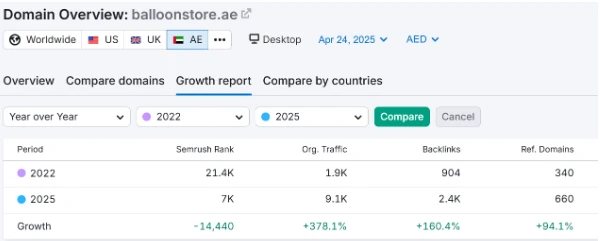What is Partnership Accounting?
- digitalmanqoosh
- October 13, 2022
- Uncategorized
- 0 Comments
Content
If the agreement is silent, the net income or loss is allocated equally to all partners. As partners are the owners of the business, they do not receive a salary but each has the right to withdraw assets up to the level of his/her capital account balance. Some partnership agreements refer to salaries or salary allowances for partners and interest on investments. These are not expenses of the business, they are part of the formula for splitting partnership accounting definition net income. Many partners use the components of the formula for splitting net income or loss to determine how much they will withdraw in cash from the business during the year, in anticipation of their share of net income. If the partnership uses the accrual basis of accounting, the partners pay federal income taxes on their share of net income, regardless of how much cash they actually withdraw from the partnership during the year.
Liquidation of a partnership generally means that the assets are sold, liabilities are paid, and the remaining cash or other assets are distributed to the partners. To illustrate, assume that there are two equal partners, Partner A and Partner B. The partnership agreement specifies that after providing for salary and interest allowances the remaining income is divided equally. Assume also that net income of the partnership was $100,000 and the two partners received allowances as indicated in the table below. If a partner invested cash in a partnership, the Cash account of the partnership is debited, and the partner’s capital account is credited for the invested amount. Sometimes a partner is admitted into the firm with a guarantee of a particular minimum amount by way of his share of the profits of the firm.
Death of a partner
Armando’s basis in property C is $15,000 and his basis in property D is $5,000 ($15,000 − $10,000). An operating agreement partnership group can be excluded if the participants in the joint production, extraction, or use of property meet all the following requirements. A partnership terminates when all its operations are discontinued and no part of any business, financial operation, or venture is continued by any of its partners in a partnership.
- Net income does not includes gains or losses from the partnership investment.
- Go to IRS.gov/Coronavirus for links to information on the impact of the coronavirus, as well as tax relief available for individuals and families, small and large businesses, and tax-exempt organizations.
- However, to avoid misunderstandings, the partnership agreement should be in writing.
- The result can be an unusually motivated group of employees with low turnover, especially if the management group regularly promotes employees into the partnership.
- After that salary and interest allowances are subtracted from Net Income, and the result is Remaining Income, which is divided equally in accordance with the partnership agreement.
It can also refer to a group of corporations and/or individuals who are acting together to operate another business, possibly including investments in that business. The resulting business may not legally be a partnership, but the action of the partners in creating the business may be considered a partnership. If a partner is contributing (or withdrawing) capital, the relevant amount will be recorded in both the partner’s capital account and the bank account. A contribution will be a credit entry in the capital account and a debit entry in the bank account, and a withdrawal will be a debit entry in the capital account and a credit entry in the bank account. The purpose of Schedule M-1 is reconciliation of income (loss) per accounting books with income (loss) per return of the partnership. In other words, it means reconciliation of accounting income with taxable income, because not all accounting income is taxable.
Salary or Commission to a Partner
The latter is responsible for recording investment balances as well as partner distributions. In accounting for partnership firms, these accounts are kept separate so as to avoid the mixing of information. State partnership statutes set the procedure to be used to wind up partnership business. In addition, the partnership agreement may alter the order of payment and the method of liquidating the assets of the partnership.
If the partnership deed is silent about the profit-sharing ratio, the profits and losses of the firm are to be shared equally by partners, regardless of their capital contribution to the firm. Another important element of the partnership is that the agreement between partners must be to share the profits and losses of a business. Though the definition contained within the Partnership Act describes the partnership because the relationship between people that comply with share the profits of a business, the sharing of loss is implied. Thus, sharing of profits and losses is important in partnership accounts. Unless the partnership agreement states otherwise, partners share profits equally. Moreover, partners must contribute equally to partnership losses unless a partnership agreement provides for another arrangement.
Introduction to Partnership Accounting
However, “safe harbors” exist in which a limited partner will not be found to have participated in the “control” of the partnership business. Safe harbors include consulting with the general partner with respect to partnership business, being a contractor or employee of a general partner, or winding up the limited partnership. If a limited partner is engaged solely in one of the activities defined as a safe harbor, then he or she is not considered a general partner with the accompanying potential liability. A limited partnership is similar in many respects to a general partnership, with one essential difference.
- Paying interest on capital is a means of rewarding partners for investing funds in the partnership as opposed to alternative investments.
- The excess of the amount withdrawn over retiring partner’s equity in the partnership is divided between the remaining partners on the basis stated in the partnership agreement.
- To figure his basis in each property, Armando first assigns bases of $15,000 to property C and $15,000 to property D (their adjusted bases to the partnership).
- A partner doesn’t always have a choice of making this special adjustment to basis.
- Moreover, increased competition among advisory firms puts pressure on pricing and client retention.












